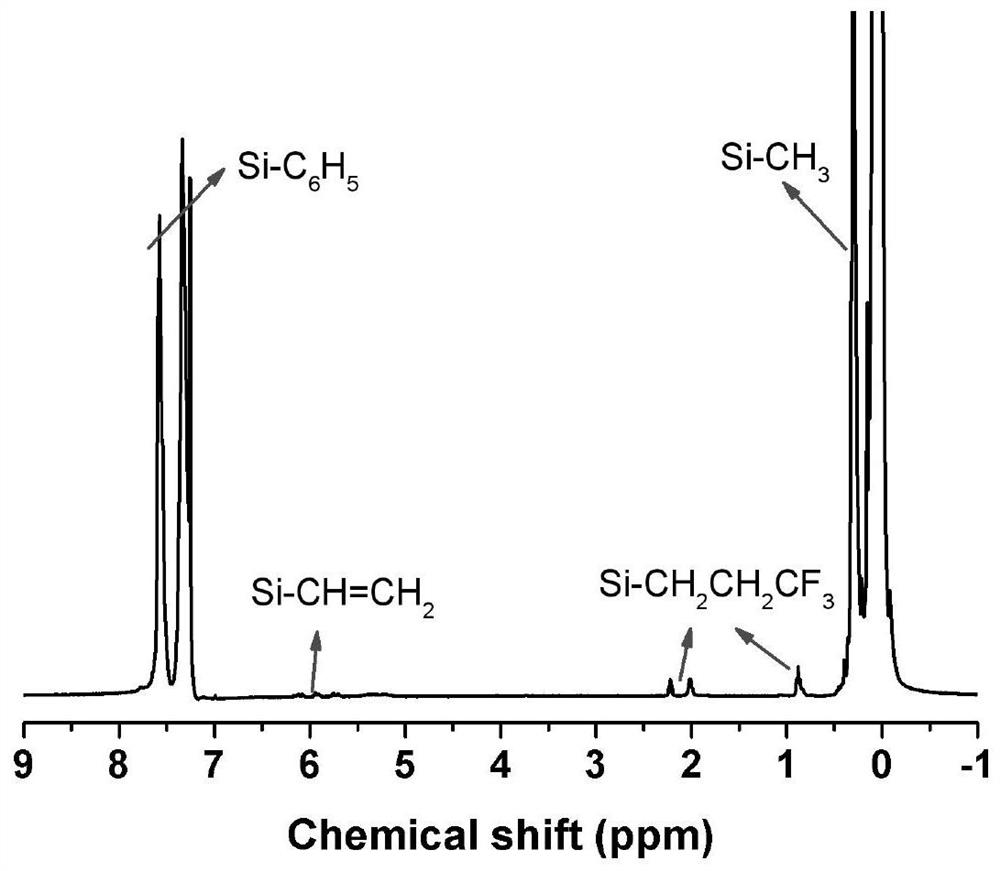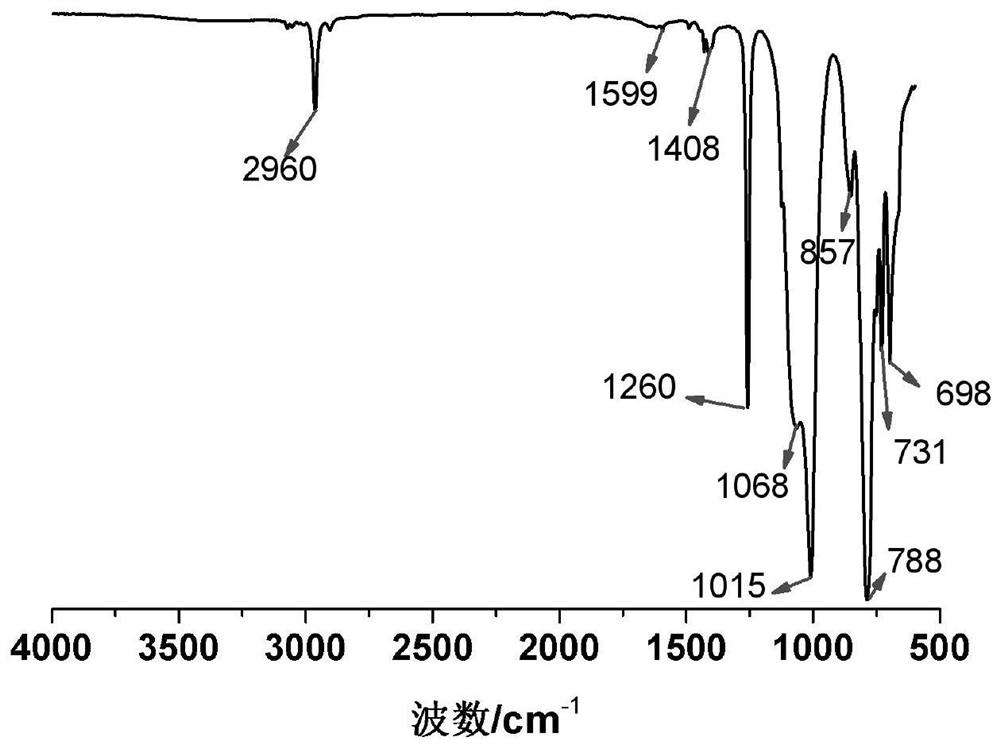Addition type multi-component copolymerized phenyl silicone rubber and preparation method thereof
A technology for copolymerizing phenyl and silicone rubber, which is applied in the field of addition-type multi-component copolymerized phenyl silicone rubber and its preparation, can solve the problems of long reaction time, cumbersome operation process, cumbersome process, etc., and achieve the optimization of product post-treatment process, The effect of high conversion rate of raw materials and short reaction time
- Summary
- Abstract
- Description
- Claims
- Application Information
AI Technical Summary
Problems solved by technology
Method used
Image
Examples
Embodiment 1
[0031] Take the following components respectively in parts by weight (grams):
[0032] (1) Preparation for synthesis
[0033] Take 1.5 times the amount of the initiator required before the reaction, put it into a beaker, place it in a vacuum drying oven at 0.1Mpa, dry it at 40°C for 2 hours, and put it in a desiccator for later use. Clean the glass equipment and place it in a blast drying oven Store at 100°C, and return to room temperature naturally after 0.5h for later use.
[0034] (2) Synthesis process
[0035] In step (1) reactor, add 16 parts of octamethylcyclotetrasiloxanes (D 4 ), 16 parts of methylphenylcyclotetrasiloxane (D 4 ph ) and 8 parts of methyltrifluoropropylcyclotrisiloxane (D 3 F ), and then heated up to 42 ° C, while pumping vacuum while blowing N 2 Or while stirring, in order to improve the dehydration efficiency, the duration is 1.5h. Then in N 2 The catalyst tetramethylammonium hydroxide is added under the atmosphere, and the dosage is 0.1 parts...
Embodiment 2-4
[0039] The experimental procedure is the same as that of Example 1, and the addition-type multi-component copolymerized phenyl silicone rubbers of Examples 2-4 with different mass ratios were synthesized according to the formula in Table 1.
[0040] Table 1
[0041]
[0042] Structure Characterization
[0043] (1) 1 H-NMR characterization
[0044] Carry out proton nuclear magnetic resonance spectrum analysis (as figure 1 ), to get the following structure:
[0045]
[0046] In the formula, m is the number of dimethylsiloxane chains, n is the number of methylphenylsiloxane chains, and p is the number of methyltrifluoropropylsiloxane chains. Si-C at δ=7.32-7.52 6 h 5 The integrated area of the peak is denoted as a, Si-CH at δ=2.01-2.22 2 CH 2 CF 3 The integrated area of the peak is denoted as b, Si-CH at δ = 0-0.5 3 The integrated area of the peak is denoted as c. Obtain following formula according to methylphenyl trifluoropropyl structural formula:
[004...
PUM
 Login to View More
Login to View More Abstract
Description
Claims
Application Information
 Login to View More
Login to View More - R&D
- Intellectual Property
- Life Sciences
- Materials
- Tech Scout
- Unparalleled Data Quality
- Higher Quality Content
- 60% Fewer Hallucinations
Browse by: Latest US Patents, China's latest patents, Technical Efficacy Thesaurus, Application Domain, Technology Topic, Popular Technical Reports.
© 2025 PatSnap. All rights reserved.Legal|Privacy policy|Modern Slavery Act Transparency Statement|Sitemap|About US| Contact US: help@patsnap.com



